- Home
- Poul Anderson
A World Named Cleopatra Page 2
A World Named Cleopatra Read online
Page 2
At this season, when watched from the equator, the ring—including the two moons—streams upward from the west as before. But at an azimuth of about 52°, not quite 60% of the way up to the zenith, the particles blank out. They do not reappear until they are correspondingly near the eastern horizon and descending. Charmian, Iras, and a few of the largest meteoroids re-main visible but turn dull coppery red from atmosphere.. refracted light, as they transit the dark gap.
This cycle of eclipse and full illumination is repeated twice in the course of a year. The precise appearance of the ring, as well as its position in the heavens, depends on time and location of the observer.
But at any season—what with auroras, background skyglow, stars, ring, and the frequently seen changeable moonlets—Cleopatran nights are not unduly dark. In clear weather, a human can make his way around pretty well without artificial light.
The tidal pull of Caesar is small, about one-third that of Sol on Earth or less than one-fifth the total of what Earth gets. Were the ring particles concentrated in one mass, the, total heave would be enormous, about 18 times what Luna gives to Earth. Scattered as they are, they produce only minor effects individually. But the resultants are complex and variable. The seas do not get stagnant, and crosscurrents often make them choppy.
GENERAL BIOLOGY
Given a planet this similar to Earth, it is not surprising that here too life arose, based on proteins in water solution, and in time developed photosynthesizing plants which formed and now maintain an oxynitrogen atmosphere. It is unusual to have so many details duplicated. (To be sure, given the vast number of worlds in the galaxy, this must happen once in a while.) Here too life-uses predominantly levoamino acids and dextro sugars. Many lipids, carbohydrates, hydrocarbons, pyr-roles, etc. are the same as on Earth, chlorophyl and hemoglobin included (with some minor variations). In like manner, we find viruses, bacteria, protozoa, vegetable and animal kingdoms.
Now it would be too improbable for every detail to be the same, considering how many are the consequence of random “choice” among numerous possibilities. Much Cleopatran life can be eaten by man, is nourish-ing and tasty; but some of it is poisonous, and all of it lacks certain vitamins and other nutrients. Hence one can live only temporarily on an exclusive diet of it. This is not a great handicap. In fact, basically it is desirable, because it works both ways. Native germs cannot func-tion in the human body, native viruses are not equipped to take over human genetic machinery in short, to man this is an infection-free world.
And of course he can introduce his own plants and animals. Given a start—e.g., by eradication of deadly weeds from a range—they will flourish. Soon the problem will be to save the Cleopatran ecology. Once established, Terrestrial life will spread fast and overwhelmingly unless it is controlled. For it is further evolved.
After all, Cleopatra is younger than Earth. If anything, it is surprising how far life has developed, in so much less time. Conceivably the energetic sun, the higher lever of actinic radiation and electrical discharge, promoted rapid development of the primitive proto-biology and later microorganisms. But afterward, perhaps, the weak tides—making for a sharper division between sea and land—delayed the conquest of the latter.
At any rate, though inaccurate, it is helpful to think of this world as being in a “Mesozoic” era.
PLANTS
Angiosperms have not yet developed. There are primitive equivalents of the spermatophytes, including some gymnosperms. These are most common in the drier inland and upland regions. The coasts, marshes, etc. are dominated by types similar to Terrestrial bryophytes and pteridophytes, more elaborated than on present-day Earth. Because of certain root-like structures, they are known as dactylophytes.
Nothing like grass or flowers exists. Moist areas are carpeted with low, dense, intensely green vegetation resembling moss. Species of this phylum have developed protection against drying out and are therefore found elsewhere as ground cover in paler and stiffer versions. Many trees and shrubs (if one may call them that) have colorful pseudoblooms, analogous to those of our poinsettias, to lure pollinators.
Among the more picturesque plants are: The mis-named dinobryons, huge dactylophytes in wet regions which suggest spongy green many-branched coral growths; the aquatic weirplant and its land relatives, the dichtophytes, carnivorous species which grow in the form of great nets to trap sizeable prey; the Venus mirror, a bush named for its highly reflective leaves, which attract glitterwings, the chameleon plant, which exhibits changes of shade and even to some degree color, according to lighting conditions—a camouflage against eaters; the sarissa, resembling sharp-pointed bamboo but growing in clusters which bristle almost horizontally outward, supported by roots along, the stalks; the grenade, a bush whose round pods explode spectacularly, though harmlessly, to scatter seeds; the Christmas memory, a primitive evergreen whose roughly shaped but brilliant red cones are like ornaments; and the delicious sugarroot.
No one region has all kinds. Some genera are circumpolar, others not. This is likewise true in the zoological field.
ANIMALS
A biologist would vehemently deny that Cleopatra has insects, fish, amphibians, reptiles, birds, mammals, or anything else Terrestrial, other than what man may import. There are too many differences of detail, some quite fundamental. Nevertheless, resemblances are close enough—when similar environments have selected for similar characteristics—that pioneers are not inclined to split every semantic hair The colonists do use scientific names for the broad classes. But “worm” has so wide a meaning even on Earth that it can reasonably be applied to numerous legless invertebrates on Cleopatra. One interesting family is that of the arthroscholes,, whose segments carry articulated, chitinoidal blue armor. Thus protected, they may grow to lengths of more than a meter.
“Insectoid” soon became shortened in daily language to “secto,” and is as loosely applied as ever “insect” and “bug” were on Earth. There are countless kinds of secto. Among the famous are the glitterwing, like a moth whose wings are almost mirrorlike because of tiny metallic particles; a long, many-legged, bulge-eyed scuttler called the I-spy; and the smidgin, which travels in swarms that darken the air, accompanied by flyers that leisurely feast on them.
Marine invertebrates include the drifting gorgon with its mesh of lethal streamers. The big polypus has no definite number of tentacles, for injury causes more than one new one to sprout. When it has grown in-conveniently many, the animal develops a second head and set of interior organs, and fissions into two—an alternative to its usual sexual reproduction. Biologists are fascinated by the problem of how this is possible in something of that size and complexity.
Besides male-female sexuality and paired eyes, parallel evolution has produced Cleopatra vertebrates which, like the Terrestrial, have just four true limbs.
Piscoids include the great, sleek, swift, carnivorous pirate and the miter-headed, grotesquely ululating sea preacher. Among marine sauroids is the macrotrach, remarkably similar in appearance to the ancient plesiosaur.
The land is dominated by sauroids. Many of them are more highly developed than any Terrestrial reptile, having efficient hearts, giving live birth and caring for their young, even showing an almost mammalian capacity to learn by experience. This is probably due to the fact that, on generally warmer Cleopatra, being homeothermic (“warm-blooded”) confers less relative advantage than on Earth; there do not seem ever to have been any glacial periods. Thus poikilothermic (“cold-blooded”) animals have had more chance to flourish and evolve new capabilities.
The best-known ones include: the hipposaur, a hoofed grazer of plains and mountains,, as big as a big horse; the king gator, a dry-land carnivore with long legs but otherwise rather crocodilian; the hoplite, a two-meter-wide walking dome of bony armor and spiky tail; the faber, eerily caricaturing humanity in appearance and certain behavior patterns; and the huge-winged flying deltasoar.
The homeothermic beasts remain primitive. They have hair
, whose possible colors include a bright green, but no mammary glands. Most young are born with full sets of teeth, immediately able to eat the same as the parents. Where this is not the case, feeding is by regurgitation. Thus even some ground-dwelling animals have beaks rather than snouts, and none have lips.
They are furthest developed in the aerial forms, the ptenoids or pseudobirds. Though none of these quite compare to Terrestrial avian in capabilities, they number some handsome species, like the colorfully plumed jackadandy. The rich-furred (not feathered) flier and diver known as the cinnamon bat is, however, a theroid.
No theroid is very large. A common forest dweller is the tree spook, suggestive of a parrot-billed lemur. On one continent, the carnivorous hootinanny runs in packs which make hideous loud noises in their throat pouches to stampede the prolific herbivorous jumping Toms; both species are rabbit-sized. In arctic regions, the snow snake has shed legs and belly fur in order to go more effectively after its own burrowing prey; with its white pelt everywhere else on the body and its affectionate ways, it makes an excellent pet. Of course, this is only a partial list.
In fact, all these remarks are quite superficial and in-complete. Any planet is a world, and therefore inexhaustible.
THE SERPENT IN EDEN
by Poul Anderson
Regardless, the planet was beautiful.
Even as the aircraft bucked and shuddered, caught in the hurricane shriek, Janne Granstad remembered Cleopatra seen from space. Against night and stars the globe had glowed, blue with its oceans, green, gold, and umber with its lands, swirled silvery with its clouds. The brighter light of the whiter sun made those hues at once more vivid and more serene than Earth’s, whose loveliness had always lured tears out upon her lashes. And then the diamond sweep of the ring!
Outside the windows, blackness and lightning raved. Violence toned through metal and bones. The craft lurched insanely, threw her against her seat .harness till straps dug into flesh. Arch Fielding turned his head around from the controls. She could just make out his cry: “No use. We haven’t got the ceiling to get above this stuff. I’ll have to ride it out till—” Janne lost the rest of his words.
She thought, dimly astonished: That shouldn’t be. Should it? No storm should be that tall. But, of course, we aren’t on Earth, Earth is nearly 400 light-years south of here…No, wait, “south” doesn’t mean the same any longer, Cleopatra doesn’t have the same lodestar…
Roberto de Barros leaned across the narrow aisle between their seats to take her hand. That was almost more bewildering. Or was it? He gave her a stiff smile and said amidst the fury, “Don’t be afraid. This is a stout vessel. While we stay aloft, we are safe.”
Are we? Janne asked in dread. At once: No, I must not panic. We have too many unknowns around us to conjure up needless ones. The laws of nature are the same here as they are at home, or in the farthest galaxy. Only the parameters are changed. And not very much. We can live here. We can walk unarmored beneath a sky and breathe an air men have never be-fouled, we can wash our bodies inside and out with the purity of waters, we can taste the fruits of an untainted soil. Earth today may be more alien to man than is Cleopatra.
But don’t think despair of any kind. Think prose, think science. Her mind almost chanted: The F7 sun gives us a third again the terrestrial irradiation, a higher proportion of it in energetic particles and quanta. The lower gravity, 0.86, means air pressure dropping more slowly with altitude. The rotation period is less too, seventeen and a third hours, making stronger Coriolis force. The smaller size of the planet may be a factor, bringing climatic zones closer together. And how many more variables have we overlooked? No wonder storms are big, wild, and so unforeseeable by us that this one actually caught us in flight.
There was courage in the dry recital. But the weather ramped on, and on, and on, driving the aircraft helpless before it.
And when at last clouds broke, sunlight speared through, wind faded as swiftly as it had arisen, Fielding told his companions in a stark voice: “We’ve gone on too long. Fuel’s about finished. I’ll have to set us down on the first decent-looking ground I spot.”
Peering through the pane beside her, Janne made out crags tumbling toward endless forests. But on the horizon, the sun low above, glimmered what had to be ocean. Then they’d crossed this whole small subtropical continent, caught in the westward half of the cyclone. Base Island lay 2000 kilometers behind. The magnitude of thit struck her like a blow.
De Barros said, “Don’t be reckless, Fielding. Husband your reserves. Don’t descend unless we are all three positive it is safe.”
“Shut up,” the pilot snapped. “I’ll be the judge of that.”
De Barros grew rigid. “I think you are exhausted and overwrought,” he said. “Granted, you are the most experienced flyer, but not at present the best. Let me take over.”
“No!” Fielding yelled, and threw a curse after it.
“Or Dr. Granstad might,” de Barros suggested, as if she were not on first-name terms with both men.
Janne shrank back in her seat. “Don’t,” she whispered. ‘Please. I—I’m sure Arch can—”
“I was thinking mainly of your welfare,” de Barros told her, but had the wit to pursue the argument no further.
Janne took refuge in watching Caesar sink, red and gold, toward the sea without a name. How small the sun was. Or—wait—it was farther away than Sol is from Earth. Otherwise Cleopatra would have been scorched barren. By day one didn’t notice the size of the disk—who could look near it?—but when coastal haze gentled its brilliance, the horizon illusion exaggerated the difference.
“Hang on,” Fielding said over his shoulder. “Pray if you want. And if we don’t make it…Janne, I’m glad to have known you.”
He gave himself back to his flying. The craft slanted downward. A wide sandy beach appeared in the forward panes, grew with terrifying speed, leaped and struck.
The vehicle bounced. Teeth rattled in jaws. Across hundreds of meters, their dunes and tricky little airs, Fielding brought his machine to a halt.
When peace had thundered upon them, Janne would have flung off her harness and kissed him. But he twisted his neck to confront de Barros and said nastily, “That’s how come I didn’t want you at the console.”
De Barros shocked her himself when he replied, cool-voiced, “My compliments on your good luck, at least. Does it extend to establishing communication with Base?”
They knew it did not.
Night was unreined sorcery.
The strand glimmered white, the wilderness behind lifted cupolas of darkness against stars and remote snow-peaks, the ocean before played a million sparkles, light-ripples, glades, and the huge broken ring-image across its ebony. Waves rolled hush-hush-hush, the ever gentle surf of Cleopatra. Breezes were mild, bearing alike the smells of salt reaches and green growth. Sand was still warm underfoot, fine enough to yield like flesh caressed. Somewhere, something unknown trilled a song.
Stars glistened in the middle heaven as if to crowd out a black which itself felt luminous. Meteors went among them, streak after silent streak. Northward they were lost in leaping banners of aurora, white, blue, violet, ice green, and ghostly rose. Southward soared the ring. The dust, gravel, and stones which had once been a moon had become a wan rainbow that reached a third of the way up the sky, along which trafficked hasty, flashing, and tumbling jewels in their hundreds. At this season, early winter, the shadow of the planet did not quite scoop out the middle of the arch; the ogive it made was almost visibly rising as night moved onward.
And then lifted Charmian, the larger of the two fragments which men had found worthy of a name. Was the name worthy of her? However tiny, at her nearness she showed as big as Luna seen from Earth. She was less bright—hardly even a globe, rough, scarred, changeable as she spun, though often a scoured spot of metal caught a sunbeam and flared—but she did not have to shine through city fumes and glare; she kindled the waters.
At their edge, Jann
e roused from her watching to think, guiltily, that she ought not to have wandered from the men. She could see them, distance-dwindled, as they began setting up camp. The glow-stove became an abrupt crimson star. She noticed she was hungry. Why didn’t they call me to come do my share? I drifted away because it seemed they’d be fiddling with the radio and squabbling with each other for hours yet. In pain: Why must they, here in a miracle?
She started back, a tall and limber young woman, yellow hair chopped off below the ears and coverall, carelessly worn, but her body possessing the handsome-ness of good structure well tended. Being at the core a practical person, as is the duty of any explorer, she answered herself: Well, it’s not a miracle without its troubles and dangers. They’re under strain, Arch and Roberto. We could die. That doesn’t seem likely, in this moment’s majesty; but what will we find tomorrow, or what will find us?
She knew there was no foretelling. A planet is a world, infinite in the number of its faces and mysteries. The fifty people who Hanno had brought were the first who ever saw Cleopatra. Before them, nothing except a robot vessel had made that enormous journey and returned to report its discoveries. They amounted to little more than the fact of an orb which seemed to be habitable and uninhabited. Machines can only find what ignorant men have programmed them to find.
And, in the weeks since arrival, the expedition had barely begun to learn. The data which observers aboard the orbiting ship could gather were valuable but lean. Those who went down and established themselves on Base Island had studied it, and the mainland shore opposite, with fanatic intensity; but they had necessarily concentrated on things like the chemistry of rocks and life, rather than topography or natural history. This flight was among the first intended to go farther inland. It was supposed to fare some few hundred kilometers, descending here and there for a closer look, returning within three or four days. Instead…

 Security
Security The Valor of Cappen Varra
The Valor of Cappen Varra The Sensitive Man
The Sensitive Man Virgin Planet
Virgin Planet To Build a World
To Build a World Seven Conquests
Seven Conquests Mayday Orbit
Mayday Orbit Innocent at Large
Innocent at Large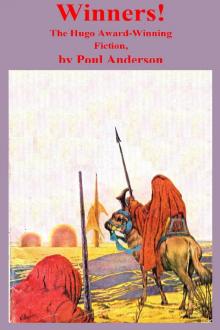 Winners!
Winners! Mother of Kings
Mother of Kings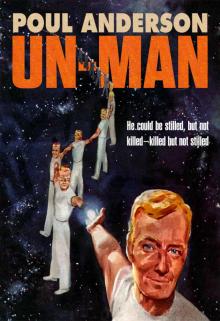 Un-Man
Un-Man War of the Gods
War of the Gods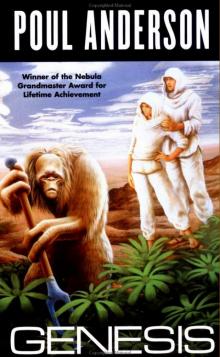 Genesis
Genesis Industrial Revolution
Industrial Revolution The High Ones and Other Stories
The High Ones and Other Stories The Chapter Ends
The Chapter Ends Flandry of Terra
Flandry of Terra Starfarers
Starfarers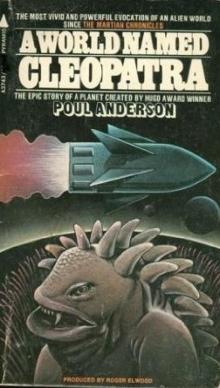 A World Named Cleopatra
A World Named Cleopatra Operation Chaos
Operation Chaos![Harvest of Stars - [Harvest of Stars 01] Read online](http://i1.bookreadfree.com/i/03/17/harvest_of_stars_-_harvest_of_stars_01_preview.jpg) Harvest of Stars - [Harvest of Stars 01]
Harvest of Stars - [Harvest of Stars 01] The Rebel Worlds
The Rebel Worlds Poul Anderson's Planet Stories
Poul Anderson's Planet Stories No World of Their Own
No World of Their Own The Merman's Children
The Merman's Children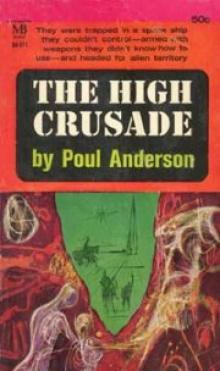 The High Crusade
The High Crusade The Stars Are Also Fire
The Stars Are Also Fire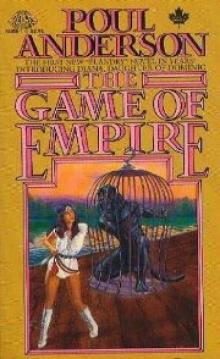 The Game of Empire df-9
The Game of Empire df-9 The Sorrow of Odin the Goth tp-7
The Sorrow of Odin the Goth tp-7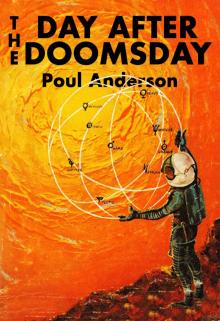 The Day After Doomsday
The Day After Doomsday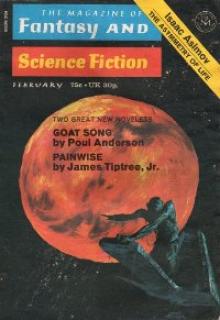 Goat Song
Goat Song The Wing Alak Stories
The Wing Alak Stories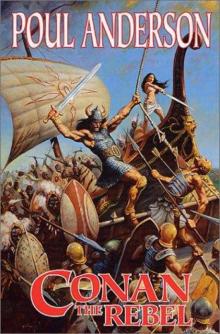 Conan the Rebel
Conan the Rebel Three Worlds to Conquer
Three Worlds to Conquer Iron mw-1
Iron mw-1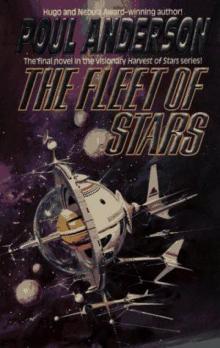 The Fleet of Stars
The Fleet of Stars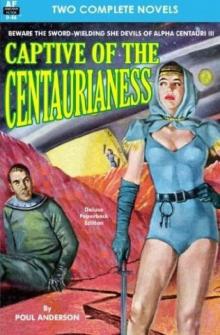 Captive of the Centaurianess
Captive of the Centaurianess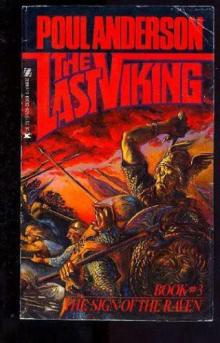 The Sign of the Raven
The Sign of the Raven The Boat of a Million Years
The Boat of a Million Years New America
New America Satan's World
Satan's World Gallicenae
Gallicenae A Midsummer Tempest
A Midsummer Tempest A Stone in Heaven
A Stone in Heaven Orbit Unlimited
Orbit Unlimited The Corkscrew of Space
The Corkscrew of Space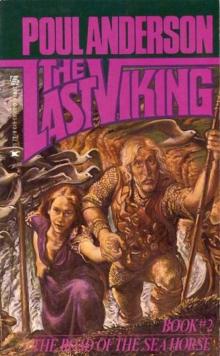 TLV - 02 - The Road of the Sea Horse
TLV - 02 - The Road of the Sea Horse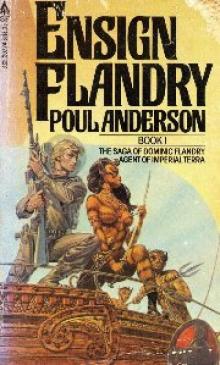 Ensign Flandry df-1
Ensign Flandry df-1 Young Flandry
Young Flandry The Broken Sword
The Broken Sword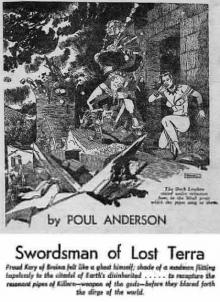 Swordsman of Lost Terra
Swordsman of Lost Terra Orion Shall Rise
Orion Shall Rise A Knight of Ghosts and Shadows df-7
A Knight of Ghosts and Shadows df-7 The Queen of Air and Darkness
The Queen of Air and Darkness To Outlive Eternity
To Outlive Eternity The Golden Slave
The Golden Slave Dahut
Dahut Captain Flandry: Defender of the Terran Empire
Captain Flandry: Defender of the Terran Empire Un-Man and Other Novellas
Un-Man and Other Novellas David Falkayn: Star Trader (Technic Civlization)
David Falkayn: Star Trader (Technic Civlization) Sir Dominic Flandry: The Last Knight of Terra
Sir Dominic Flandry: The Last Knight of Terra Vault of the Ages
Vault of the Ages The Devil's Game
The Devil's Game A Stone in Heaven df-12
A Stone in Heaven df-12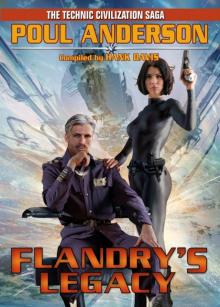 Flandry's Legacy: The Technic Civilization Saga
Flandry's Legacy: The Technic Civilization Saga Harvest the Fire
Harvest the Fire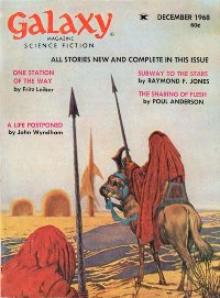 The Sharing of Flesh
The Sharing of Flesh Harvest of Stars
Harvest of Stars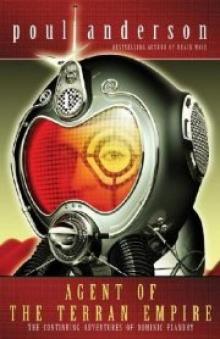 Agent of the Terran Empire
Agent of the Terran Empire World without Stars
World without Stars The Corridors of Time
The Corridors of Time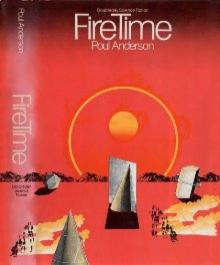 Fire Time gh-2
Fire Time gh-2![The Stars are also Fire - [Harvest the Stars 02] Read online](http://i1.bookreadfree.com/i1/04/01/the_stars_are_also_fire_-_harvest_the_stars_02_preview.jpg) The Stars are also Fire - [Harvest the Stars 02]
The Stars are also Fire - [Harvest the Stars 02] We Have Fed Our Sea
We Have Fed Our Sea Demon of Scattery
Demon of Scattery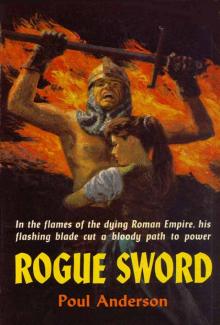 Rogue Sword
Rogue Sword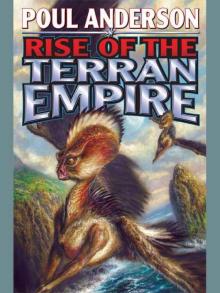 Rise of the Terran Empire
Rise of the Terran Empire The Only Game in Town tp-4
The Only Game in Town tp-4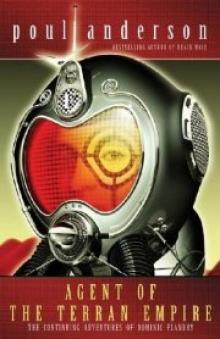 Agent of the Terran Empire df-5
Agent of the Terran Empire df-5 The Day Of Their Return
The Day Of Their Return Brain Wave
Brain Wave The Day of Their Return df-4
The Day of Their Return df-4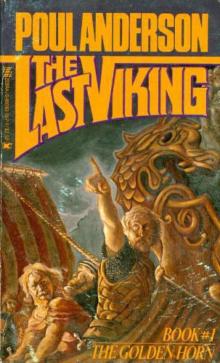 The Golden Horn
The Golden Horn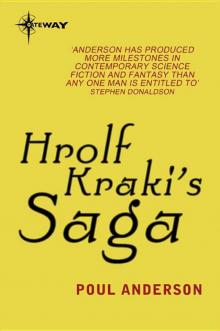 Hrolf Kraki's Saga
Hrolf Kraki's Saga Tau Zero
Tau Zero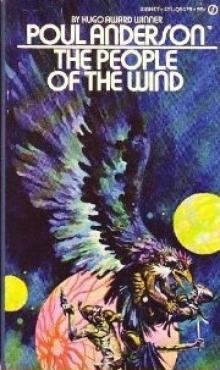 The People of the Wind
The People of the Wind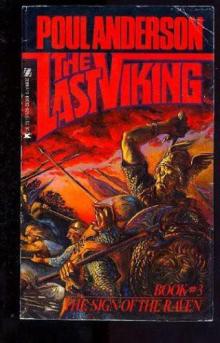 TLV - 03 - The Sign of the Raven
TLV - 03 - The Sign of the Raven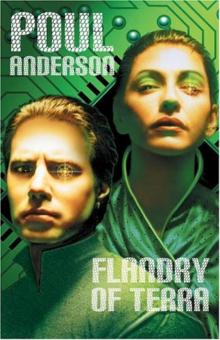 Flandry of Terra df-6
Flandry of Terra df-6 Gibraltar Falls tp-3
Gibraltar Falls tp-3 The Game Of Empire
The Game Of Empire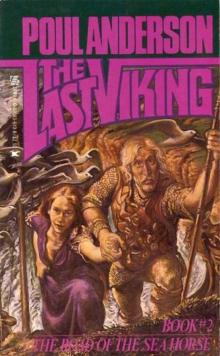 The Road of the Sea Horse
The Road of the Sea Horse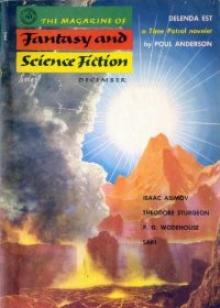 Delenda Est tp-5
Delenda Est tp-5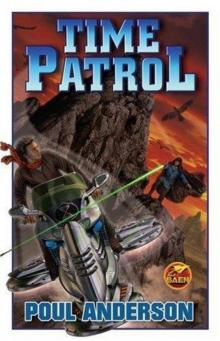 Time Patrol
Time Patrol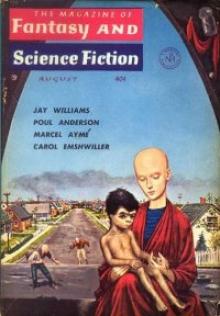 Brave To Be a King tp-2
Brave To Be a King tp-2 The Man Who Counts nvr-1
The Man Who Counts nvr-1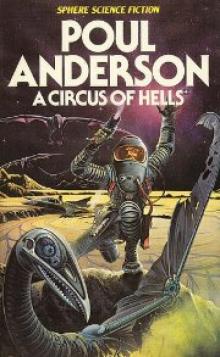 A Circus of Hells df-2
A Circus of Hells df-2 The Rebel Worlds df-3
The Rebel Worlds df-3 The Unicorn Trade
The Unicorn Trade Lord of a Thousand Suns
Lord of a Thousand Suns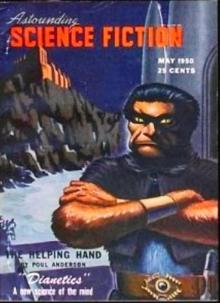 The Helping Hand
The Helping Hand The Shield of Time
The Shield of Time The Van Rijn Method
The Van Rijn Method A Circus of Hells
A Circus of Hells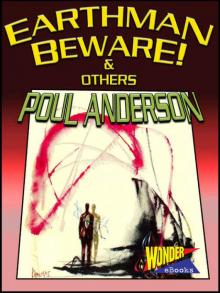 Earthman, Beware! and others
Earthman, Beware! and others Ivory, and Apes, and Peacocks tp-6
Ivory, and Apes, and Peacocks tp-6 Life Cycle
Life Cycle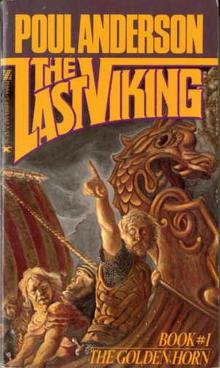 The Last Viking
The Last Viking Roma Mater
Roma Mater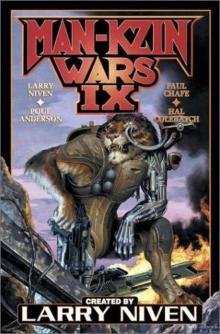 The Man-Kzin Wars 09 mw-9
The Man-Kzin Wars 09 mw-9 For Love and Glory
For Love and Glory Eutopia
Eutopia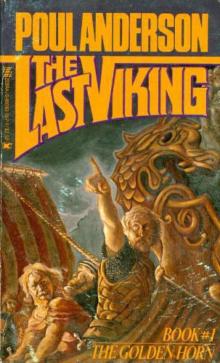 TLV - 01 - The Golden Horn
TLV - 01 - The Golden Horn The Old Phoenix Tavern
The Old Phoenix Tavern The Long Night df-10
The Long Night df-10 The Dog and the Wolf
The Dog and the Wolf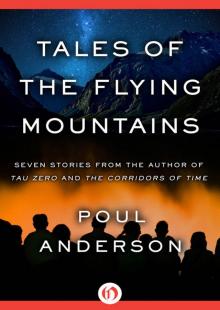 Tales of the Flying Mountains
Tales of the Flying Mountains There Will Be Time
There Will Be Time A Knight of Ghosts and Shadows
A Knight of Ghosts and Shadows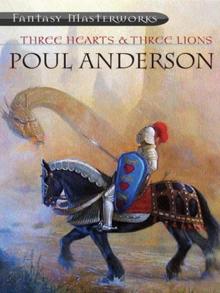 Three Hearts and Three Lions
Three Hearts and Three Lions The Makeshift Rocket
The Makeshift Rocket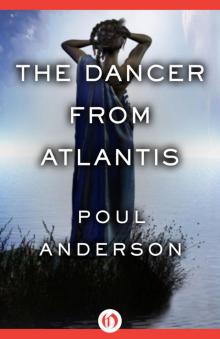 The Dancer from Atlantis
The Dancer from Atlantis Fire Time
Fire Time